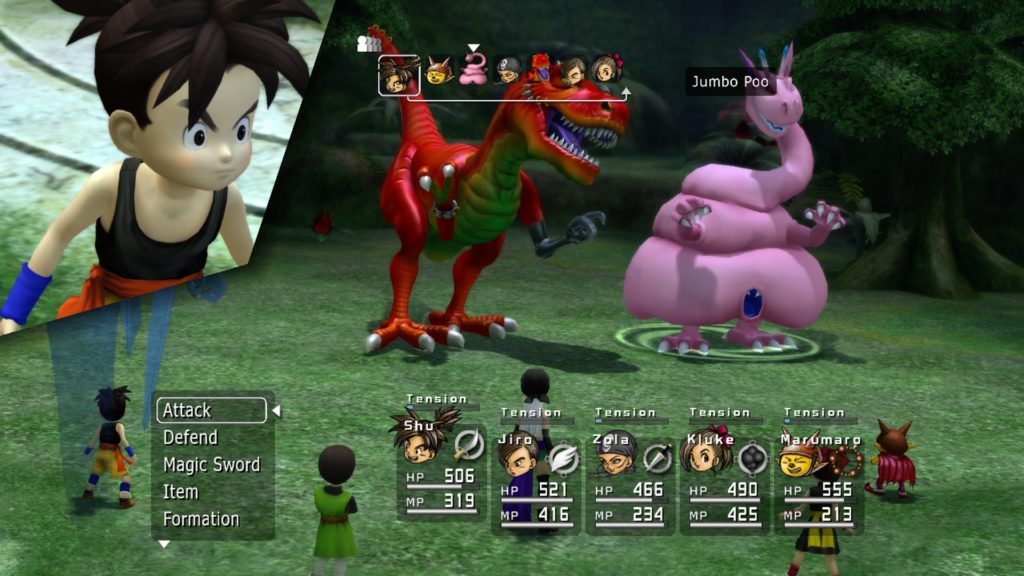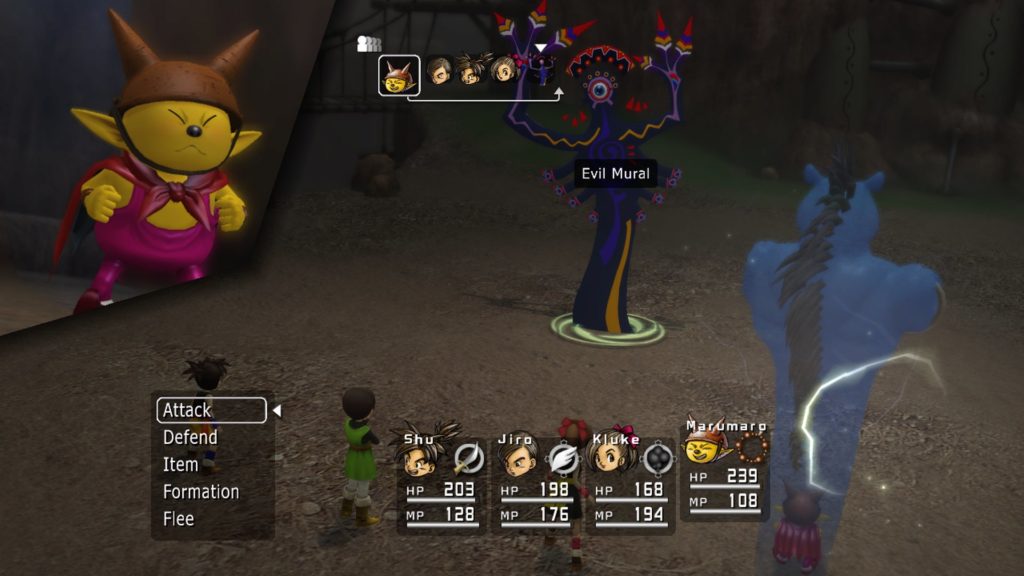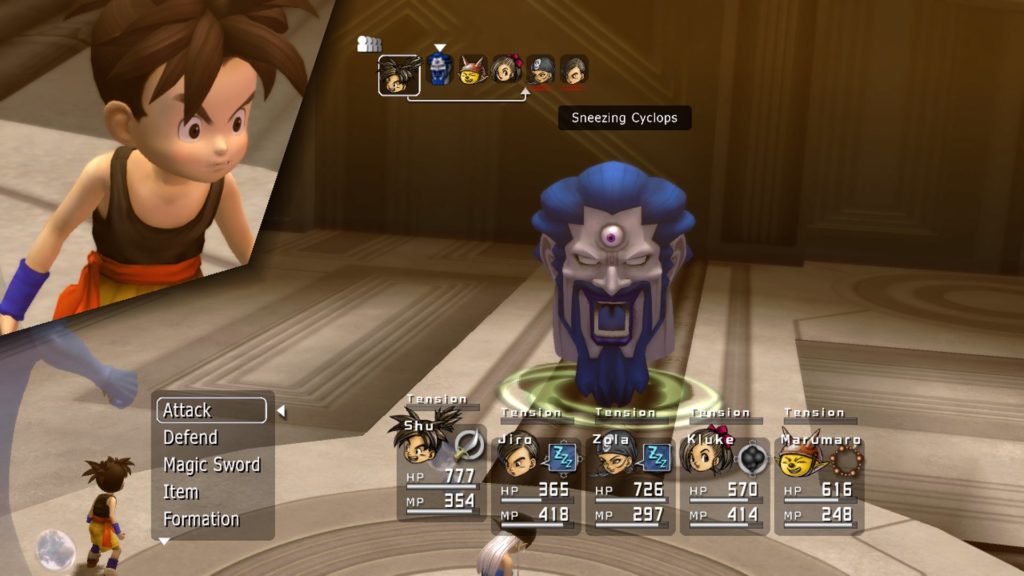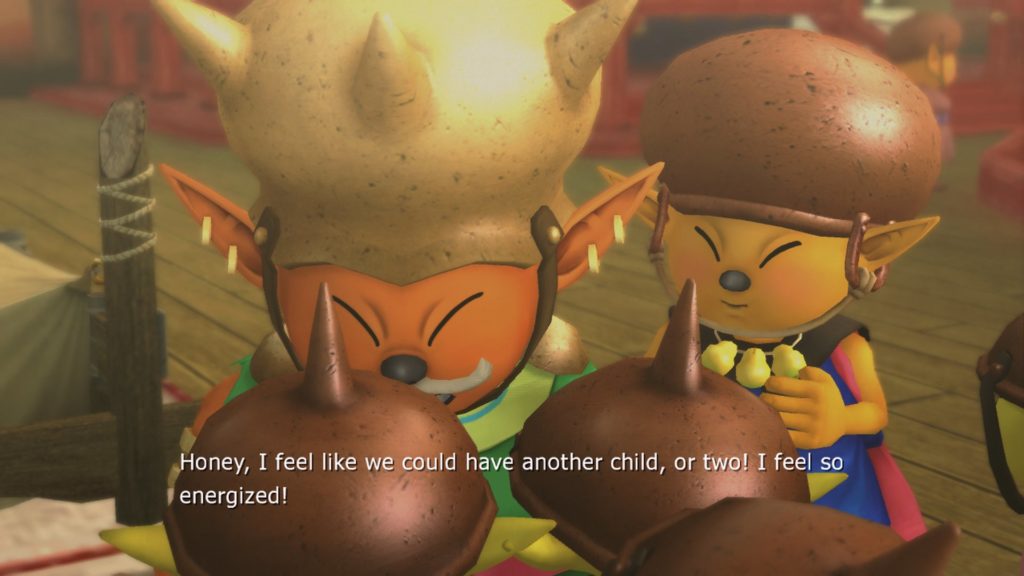- Genre: JRPG
- Platform: Xbox 360
Blue Dragon is an interesting one. It was Mistwalker’s big debut game, bringing all the hype of having a bunch of high level ex-Square folks on it. It was coming to a weird platform for the genre, but with a bunch of marketing behind it courtesy of Microsoft. It was also a distinctly classic JRPG, going with a straight turn-based approach at a time when Final Fantasy XII was moving the genre in a different direction. At the time of release I had gotten through a decent chunk of it, but kind of fell away and I wanted to re-up my memory of it in order to jump into the DS sequels. Given its age, it still plays remarkably well, though it’s not without its problems.

Being quite honest, both it aging well AND it having problems comes down to its combat. This is a classic job-class system paired with a classic turn-based combat system, so there’s not much of a barrier to entry here. Your job determines your skills, your turn order determines the strategy in terms of what you kill first, etc. Where this really works well is in the small wrinkles they brought to each system.
On the job class side, you have a typical JRPG character level AND a job rank. This had been seen before, but it was implemented well here. The rank determines what skills are available to you, for example later job ranks of the black mage class allow you to use level 1, 2, 3, etc black magic spells. However, the nice wrinkle here is that you can equip skills you’ve earned while playing a different class.
Where this worked well for me was in mix and matching my melee and ranged characters. On the melee front, I focused on a specific class for each, but also made sure they had trained to at least level 11 in monk and swordsmen. This granted them the capability to do charged attacks as well as absorb HP on melee attacks. For my two ranged, I again had a focus on white/black mage, but I also let them play some time in the opposing class, as well as mixing in some early levels of other classes to give a bit of variety in terms of my skill layout. This variety allowed me to do a really fine-tuned class structure for how I wanted to approach combat, rather than being restricted to one specific thing at a time. This definitely felt better than a lot of earlier approaches to job systems where I often felt locked into specific roles because of their importance to the overall combat structure.

The turn order system within combat was also something I ended up enjoying a lot, especially as I tuned my party setup a bit. At its basic level, turn order seems static. However, as you start gaining charge attacks – both the melee charge I was doing through the monk class, as well as magic attacks – you start gaining a lot of ability to mess with the turn order. The tl;dr here is that the longer you charge an attack, the stronger the attack is, but at the cost of the attack firing later in the turn order as well as it having a longer recovery. However, the charges each have a red zone where you gain reduced cost and increased recovery if you nail the timing just right.
Being able to hit those timed zones, as well as the ability to manipulate where in the turn order you’re attacking becomes incredibly powerful, as well as a nice thing to break up the typical monotony of turn-based JRPGs. If you’re in a large trash fight, you can mess with the turn order a bit to try and line up a bunch of damage to take out targets before they can go. Against bosses, you can decide to reduce your charge a bit or defend with the mages to make sure that you have a white mage lined up immediately. This kind of variety is really key to me about why this game has aged so well. Every fight can be its own little mini strategy session to maximize how well you come out of it. You can go through trash fights with goals of reducing damage you take, rather than just going through the motions of killing things for XP. On boss fights, you add layers of strategy that act as little mini sessions between boss turns to try and keep your party safe enough to get by. It all just works really well.

What didn’t really work well is the same sin that way too many JRPGs suffer from – the end boss run is a slog. So many JRPGs fall into a trap where they have pretty decent power curves that keep users at a relatively stable difficulty level throughout the game, then at the end of the game you get thrown in a multi-phase marathon of bosses that kind of forces you to either have the perfect party or be overpowered, and this game isn’t an exception.
The specific problem I had with the end boss in this one is that it suddenly shifted into a setup where the boss was running significant MP drain. It’s not that I dislike the mechanic, but it hadn’t really shown up much to this point so I wasn’t overly prepared to counter it. The MP heal items are next to useless at the level of MP in play at this point in the game, so the real answer is to use the black mage extraction spells. This worked great on my black mage, but didn’t work so well on my white/support mage who I hadn’t trained up to this point. A white mage without the ability to heal is kind of bad news. Ultimately I was able to get pretty far in the fight, but ran out of mana and hit the point where I wasn’t able to keep healing enough while also balancing MP extraction/MP items and wiped. In general this has a pretty easy answer – go back and grind a bit to get the class levels necessary to have the extraction. However, at that point I’d also be gaining standard levels, and more than likely instead of grinding the job class up, I’d be grinding my entire party up enough to likely overpower the boss fight just in general. This also came after over an hour of OTHER boss fights and cutscenes that I frankly didn’t have problems with and didn’t want to roll through again.
This kind of rapid escalation at the end of the game has always felt cheap to me. It feels like it’s there just to squeeze out a few more hours of game time. Ultimately it’s just a punishment and massive interruption to the player at a point where they should be hitting the peak of the story. It leaves a bad taste in my mouth putting a game back on the shelf when it ends this way instead of remembering what had been good for the countless hours beforehand. More often than not, JRPGs I flag as my favorites of all time end with smooth difficulty and appropriate challenge instead of rapid escalation and a time extending ass kicking. It’s kind of funny playing this one now though, because one of the final bosses in Mistwalker’s latest title Fantasian had similar problems, where it was extremely difficult the first time I played it, but trivialized by equipping posion nullification equipment. Unfortunately Blue Dragon landed on the wrong side for me where it was ultimately a flip of the dice that my party was just built in a different direction that didn’t work out for the last fight.

Ultimately though, this was a fun game to play through and it got me to my goal of remembering the story well enough to move forward with the sequels. A lot of JRPGs generally haven’t aged that well (I’m looking at you PS1 Final Fantasy games), so finding one that still has far more good than bad to it is always a nice surprise. It’s also nice that this one has aged far better than my last 360 look back, so not all hope is lost for digging into my backlog a bit. This one is still floating around the Microsoft store on backwards compatibility for both the Xbox One and Xbox Series* so if JRPGs are your thing, go ahead and take a peak at what’s there.
